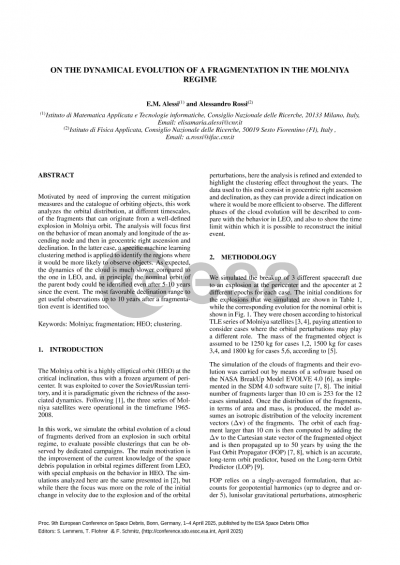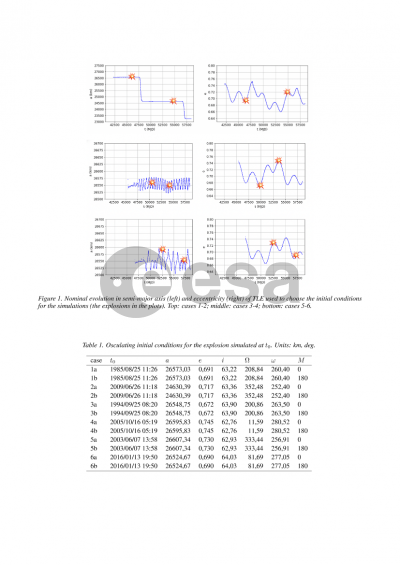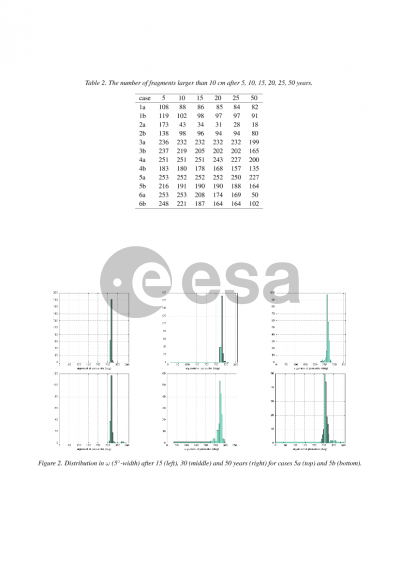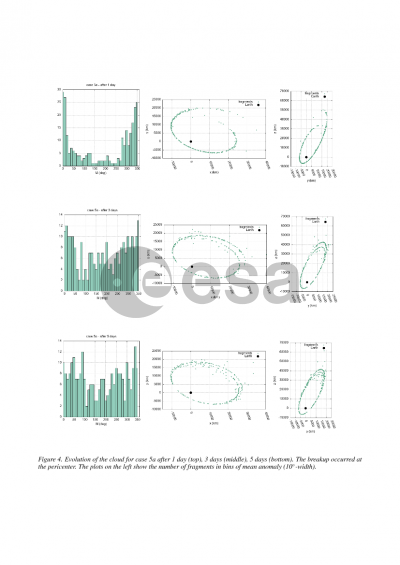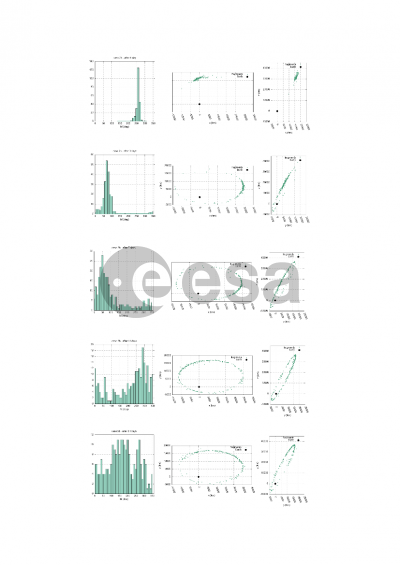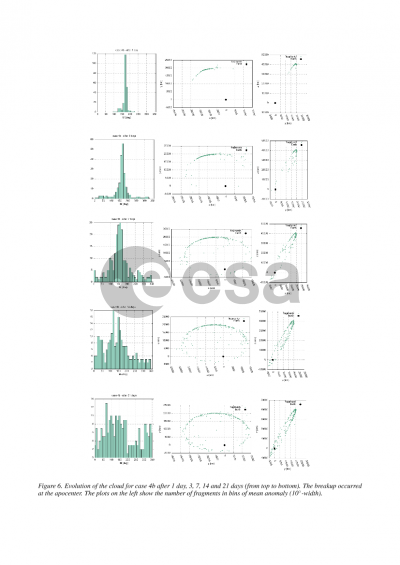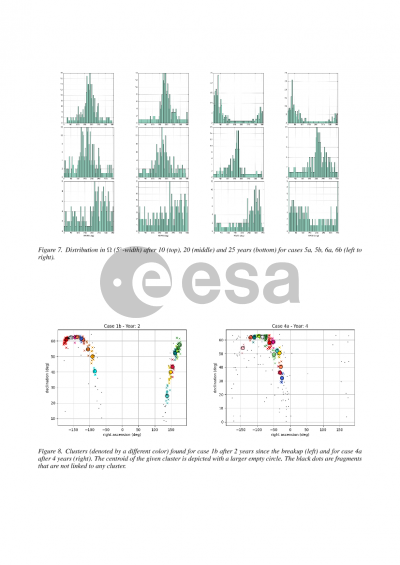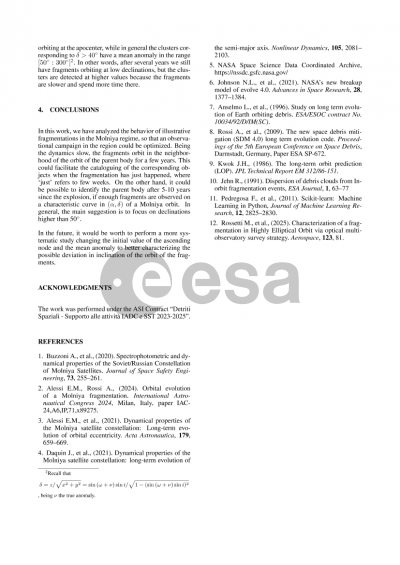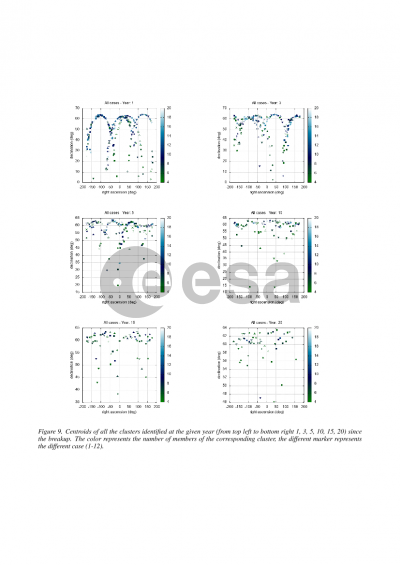Document details

Abstract
In this work, we simulate the orbital evolution of a cloud of fragments derived from an explosion in Molniya orbit, to evaluate possible clusterings that can be observed by dedicated campaigns. The Molniya orbit is a highly elliptical orbit (HEO) at the critical inclination, thus with a frozen argument of pericenter. It was exploited to cover the Soviet/Russian territory, and it is paradigmatic given the richness of the associated dynamics.
The motivation of this work is to support the improvement of the current mitigation measures and the catalogue of orbiting objects, by analyzing the behavior of illustrative fragmentations in a typical HEO so that an observational campaign in the region could be optimized, given the corresponding issues.
The work is structured as follows. We assume that the explosion occurs at different epochs and different values of mean anomaly and we analyze the outcome to see the role of the initial variation in velocity and of the natural perturbations acting on the orbit.
Indications on the time of randomization in mean anomaly and longitude of the ascending node will be given and compared to typical timeframes in LEO.
The results are then translated in geocentric right ascension and declination, to show where it would be more efficient to observe and also the time limit to be able to reconstruct the initial event.
The study will pave the way to an improvement of the current knowledge of HEO regions in general.
The work described in this abstract was performed under the ASI Contract “Detriti Spaziali - Supporto alle attività IADC e SST 2023-2025”.
Preview
